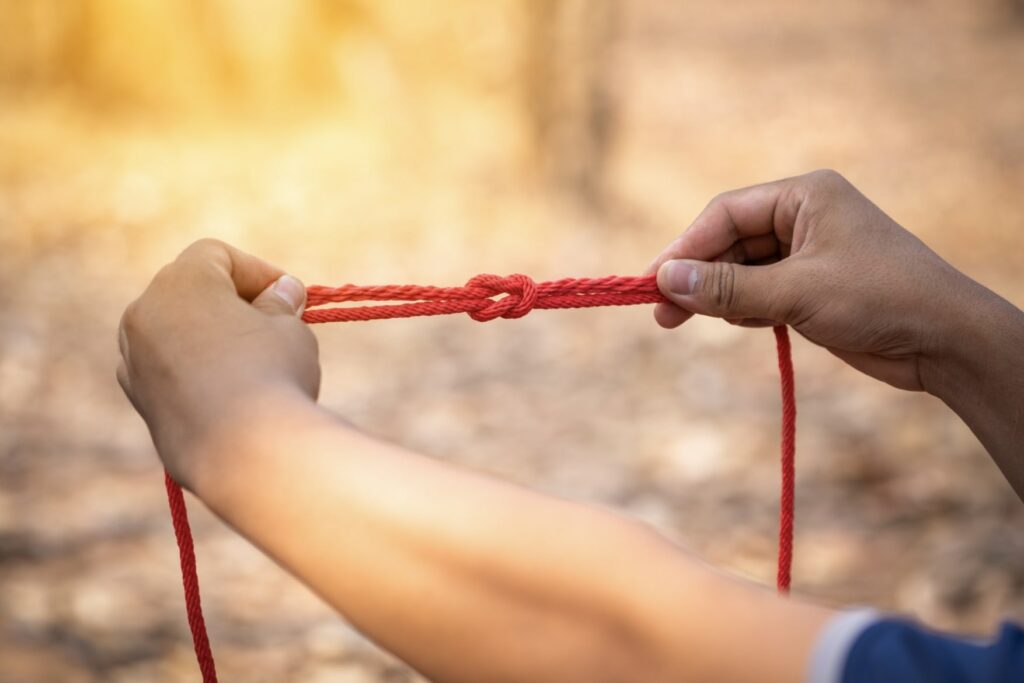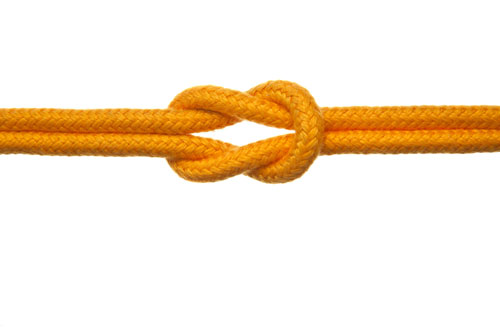Best Camping Knots 2023: Essential Ties for Outdoor Enthusiasts

Have you ever been on a camping trip and found yourself wrestling with a rope, trying to remember that knot you learned in Boy Scouts or Girl Guides? You’re not alone! For many of us, tying knots is a skill that’s quickly forgotten once we leave childhood behind. But when you’re out in the wilderness, knowing how to tie a secure knot can be the difference between a relaxing trip and a survival situation. That’s why we’ve put together this guide on the best camping knots for 2023.
Whether you’re a seasoned camper, an outdoor enthusiast, or planning your first camping adventure, mastering the art of knot-tying is an essential skill. Not only can it save you from potential mishaps, but it can also significantly enhance your camping experience. Trust us, nothing beats the satisfaction of pitching a perfect tent or hanging a hammock securely, all thanks to the power of a well-tied knot!
But wait, with countless knot techniques out there, which ones should you focus on? Glad you asked! We’ve narrowed down the list to the top 5 knots that every camper should know. We promise, they’re easier to remember than your high school algebra!
Ready to become the knot-tying champion of your next camping trip? Let’s dive into the wild and wonderful world of camping knots!
Our Picks:
- Bowline Knot
- Clove Hitch
- Taut-Line Hitch
- Figure-Eight Knot
- Square Knot (Reef Knot)
What Are the Best Camping Knots?
When it comes to camping, not all knots are created equal. Some knots are perfect for securing your tent, while others are ideal for hanging food away from curious critters. The secret is knowing which knot to use when. And that’s where our guide comes to the rescue!
Choosing the right knot can seem as daunting as picking the perfect marshmallow for toasting. Do you go for the big fluffy one or the smaller, denser one? It’s a tough call, we know. But unlike marshmallows, the consequences of choosing the wrong knot can be a bit more severe than a slightly over-toasted treat.
Jokes aside, the importance of knowing your knots can’t be overstated. A well-tied knot can mean the difference between a secure shelter and a tent that collapses in the middle of the night. It’s like choosing between a peaceful night’s sleep under the stars and a midnight wrestling match with your tent. And we all know which one we’d prefer, right? So, read on, and let’s turn you into a knot-tying whizz!
1. Bowline Knot

The Bowline Knot is a classic among campers and sailors alike. This knot, known for its versatility and strength, creates a fixed loop at the end of a rope. Due to its simplicity and effectiveness, it has become a staple in the world of outdoor adventures.
In more detail, the Bowline Knot is a go-to choice for securing a rope to a tree, a post, or any other object. It’s incredibly useful for rescue work, thanks to its ‘non-slipping’ characteristic. However, it’s essential to remember that the Bowline Knot can slip when not under load, so it’s not recommended for activities like climbing where safety is critical.
Specifications:
- Knot Type: Loop Knot
- Difficulty: Medium
- Uses: Securing a rope to a tree, post, or other objects; rescue work
- Reversibility: Easy to untie
Tested Features:
- Easy to tie and untie
- Does not slip or bind under load
- Versatile and useful for a variety of camping situations
| Pros | Cons |
| – Versatile and practical for many camping situations – Easy to tie and untie | – Can occasionally slip when not under load |
2. Clove Hitch

The Clove Hitch is another popular camping knot with a wide range of applications. Composed of two successive half-hitches around an object, this knot is perfect for starting and ending lashings, like when you’re building a shelter or securing a load.
In more detail, the Clove Hitch is quick to tie and easy to adjust. However, it’s not particularly secure on its own. This knot can slip if the object it’s tied around is smooth or non-cylindrical. So, while it’s a great starting point for many lashing tasks, it shouldn’t be relied on for critical loads.
Specifications:
- Knot Type: Hitch Knot
- Difficulty: Easy
- Uses: Starting and ending lashings, securing loads
- Reversibility: Easy to untie
Tested Features:
- Composed of two successive half-hitches
- Excellent for lashings
- Quick and easy to tie and adjust
| Pros | Cons |
| – Quick and easy to tie – Excellent for starting and ending lashings | – Can slip if the object it’s tied around is smooth or non-cylindrical – Not particularly secure on its own |
3. Taut-Line Hitch

The Taut-Line Hitch is an adjustable loop knot that slides up and down the rope to increase or decrease the size of the loop. This knot is particularly useful when you need a line with adjustable tension, such as a clothesline or a tent guy line.
To elaborate, the Taut-Line Hitch is excellent for camping scenarios where the tension of a rope needs to be adjusted frequently. However, this knot may not hold well on synthetic or slippery ropes. So, if you’re using modern ropes made from materials like nylon or polypropylene, you might want to consider using a different knot.
Specifications:
- Knot Type: Hitch Knot
- Difficulty: Medium
- Uses: Tensioning a line, such as a clothesline or a tent guy line
- Reversibility: Easy to untie
Tested Features:
- Adjustable loop knot
- Great for tensioning lines
- Holds well on natural fiber ropes
| Pros | Cons |
| – Adjustable and versatile – Ideal for tensioning lines | – May not hold well on synthetic or slippery ropes |
4. Figure-Eight Knot

The Figure-Eight Knot is a robust and reliable knot used in various activities, from camping to sailing, and even search and rescue operations. This knot can be used to make a large, strong stopper at the end of a rope or a loop in the middle.
In more detail, the Figure-Eight Knot is a favorite in climbing scenarios because it’s easy to inspect and doesn’t easily come undone. However, it can be quite difficult to untie once it has been loaded, which is something to keep in mind when choosing this knot.
Specifications:
- Knot Type: Stopper Knot
- Difficulty: Medium
- Uses: Climbing, sailing, search and rescue
- Reversibility: Difficult to untie after loading
Tested Features:
- Creates a large, strong stopper knot
- Easy to inspect
- Does not easily come undone
| Pros | Cons |
| – Strong and reliable – Doesn’t easily come undone | – Can be difficult to untie after loading |
5. Square Knot (Reef Knot)

The Square Knot, also known as the Reef Knot, is a simple and quick-to-tie knot used to secure a rope or line around an object. It’s commonly used for tying bandages, packages, and joining two ropes together.
In more detail, the Square Knot is a great knot for many simple tasks around the campsite. However, it’s not very secure and can slip or come undone under load. Therefore, it should not be used for critical loads where safety is a concern.
Specifications:
- Knot Type: Binding Knot
- Difficulty: Easy
- Uses: Tying bandages, packages, joining two ropes together
- Reversibility: Easy to untie
Tested Features:
- Simple and quick to tie
- Useful for a variety of non-critical tasks
| Pros | Cons |
| – Simple and quick to tie – Useful for a variety of tasks | – Not very secure – Can slip or come undone under load |
What to Look for When Choosing the Best Camping Knots?
- Versatility: Look for knots that can be used in a variety of situations. The more versatile a knot is, the more useful it will be on a camping trip.
- Ease of Tying: Some knots are more complicated to tie than others. For camping purposes, prioritize knots that you can easily and quickly tie, even in adverse conditions.
- Strength and Security: Ensure that the knot you choose is strong and secure enough for its intended use. For example, if you’re using the knot to secure a load, it should be able to hold the weight without slipping.
- Ease of Untying: Knots that are difficult to untie can be a hassle, especially in emergency situations. Opt for knots that can be easily untied when needed.
How to use a folding saw?
- Practice: The key to mastering any knot is practice. Spend some time learning and practicing each knot before your camping trip.
- Use the Right Rope: Different knots work better with different types of rope. Make sure you’re using the right rope for the knot you’re tying.
- Inspect Your Knots: Always check your knots to ensure they’re tied correctly and securely. A poorly tied knot can be a safety hazard.
- Use Knots Appropriately: Not every knot is suitable for every task. Use each knot as it’s intended to ensure safety and effectiveness.
Comparison of Products
| Knot | Versatility | Ease of Tying | Strength and Security | Ease of Untying |
|---|---|---|---|---|
| Bowline Knot | High | Medium | High | High |
| Clove Hitch | Medium | High | Medium | High |
| Taut-Line Hitch | High | Medium | Medium | High |
| Figure-Eight Knot | Medium | Medium | High | Low |
| Square Knot (Reef Knot) | High | High | Low | High |
Conclusion
So there you have it, folks – a comprehensive guide to the best camping knots for 2023. Whether you’re an experienced camper or a newbie just dipping your toes into the great outdoors, knowing your knots is a skill that will always come in handy. From pitching your tent to securing your food supplies, a well-tied knot is your trusty ally in the wilderness.
Remember, practice makes perfect. So grab a rope and start practicing these knots today. Who knows, you might just become the knot-tying champ of your next family camping trip!
Frequently Asked Questions
What knot is best for tying two ropes together?
The Square Knot, also known as the Reef Knot, is commonly used for tying two ropes together. However, it’s not very secure and should not be used for critical loads.
How do I practice tying knots?
You can practice tying knots using a piece of rope or cord. Start with simple knots like the Square Knot, then move on to more complex ones like the Bowline Knot or the Figure-Eight Knot.
What knot is best for securing a load?
The Bowline Knot is a great choice for securing a load as it does not slip or bind under load. However, it can occasionally slip when not under load.
What’s the most durable knot for camping?
The Figure-Eight Knot is known for its durability. It makes a large, strong stopper knot that does not easily come undone.
What type of rope is best for camping knots?
The type of rope best suited for camping knots depends on the specific knot and use. However, natural fiber ropes like cotton, hemp, or sisal generally hold knots well. For more heavy-duty purposes, synthetic ropes like nylon or polyester may be more appropriate.


Deeba & Matt
About the Authors
Intrepid content creators and relentless hiking enthusiasts. With a passion for travel and adventure, Matt & Deeba are never one to shy away from a daring challenge.
